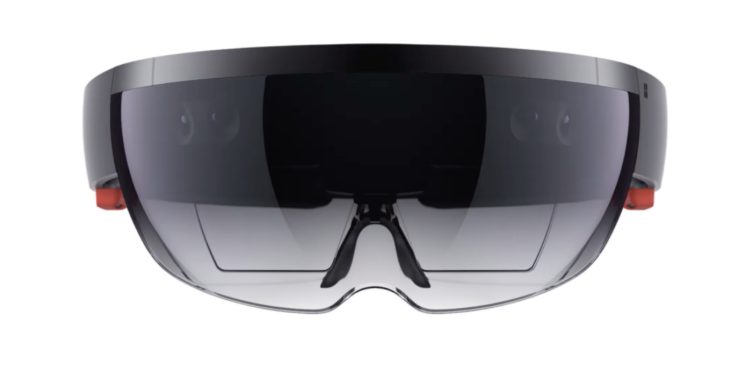

Nearly three years on from Microsoft unveiling its HoloLens augmented reality headsets, the company today announced a major expansion of its availability: 29 more markets in Europe, nearly tripling the total number of countries where you can buy the device up to 39.
The news shows that while we don’t have a firm number of how many units have been sold, we do know that Microsoft is banking on the device, a non-immersive experience that lets you interact with visual digital images while still being able to see a room as you would normally, as a core piece of its future hardware and software efforts in a bid to compete against the likes of Apple and Google.
“This is where we believe computing is going,” said Lorraine Bardeen, general manager of Microsoft HoloLens and Windows experiences, who announced he expansion today at Microsoft’s Future Decoded event in London. “We can bring all your apps and programs right into your world, but you can still see all the things in your world that matter to you.”
No details so far on when devices in the expanded list will ship, or what local prices will be (we are asking and will update as we learn more). Currently, Microsoft sells a “Development Edition” of the device for $3,000 and a “Commercial Suite” with added enterprise features for $5,000.
The new countries — Austria, Belgium, Bulgaria, Croatia, Cyprus, Czech Republic, Denmark, Estonia, Finland, Greece, Hungary, Iceland, Italy, Latvia, Liechtenstein, Lithuania, Luxembourg, Malta, Netherlands, Norway, Poland, Portugal, Romania, Slovakia, Slovenia, Spain, Sweden, Switzerland and Turkey — come one year after Microsoft first took the HoloLens outside of the U.S., when it launched it in Australia, France, Germany, Ireland, New Zealand and the United Kingdom. It has since then also expanded it to its first Asian country, Japan. A reported launch in China earlier this year seems not to have materialised yet.
There has been some debate about Microsoft’s strategy of being an early mover in AR — specifically whether banking it primarily around hardware rather than software for readily-available devices (as Apple and Google have done respectively with ARKit and ARCore) has been the wisest move for the company. For now, it seems that it’s the route that Microsoft will continue to take.
If the first wave of international rollouts helped Microsoft hit all Europe’s largest markets, today’s news underscores how Microsoft is now entering a wider, scaling phase for its mixed-reality hardware, and points to the company’s intention to keep it at the center of its future hardware plays, particularly as Microsoft continues to push into enterprise tools and services.
“At Microsoft we are on a mission to empower every person and organization on the planet to achieve more,” said Bardeen. “Mixed reality has the potential to help customers and businesses across the globe do things that, until now, have never been possible. Mixed reality experiences will help businesses and their employees complete crucial tasks faster, safer, more efficiently, and create new ways to connect to customers and partners.”
The HoloLens is built to run with Windows 10, which natively supports holographic interfaces at the API level. This lets developers program actions through gaze, gesture, voice and “environmental understanding” (that is, making sure that an object doesn’t pass through a wall, but bumps against it); and also more easily translate Windows 10 apps into apps that can work on the HoloLens.
While the majority of the world has yet to sign on to using and embracing augmented and virtual reality applications, these are important steps in making mixed-reality applications and devices less awkward and part of the more seamless continuum of consumer electronics and computing.

